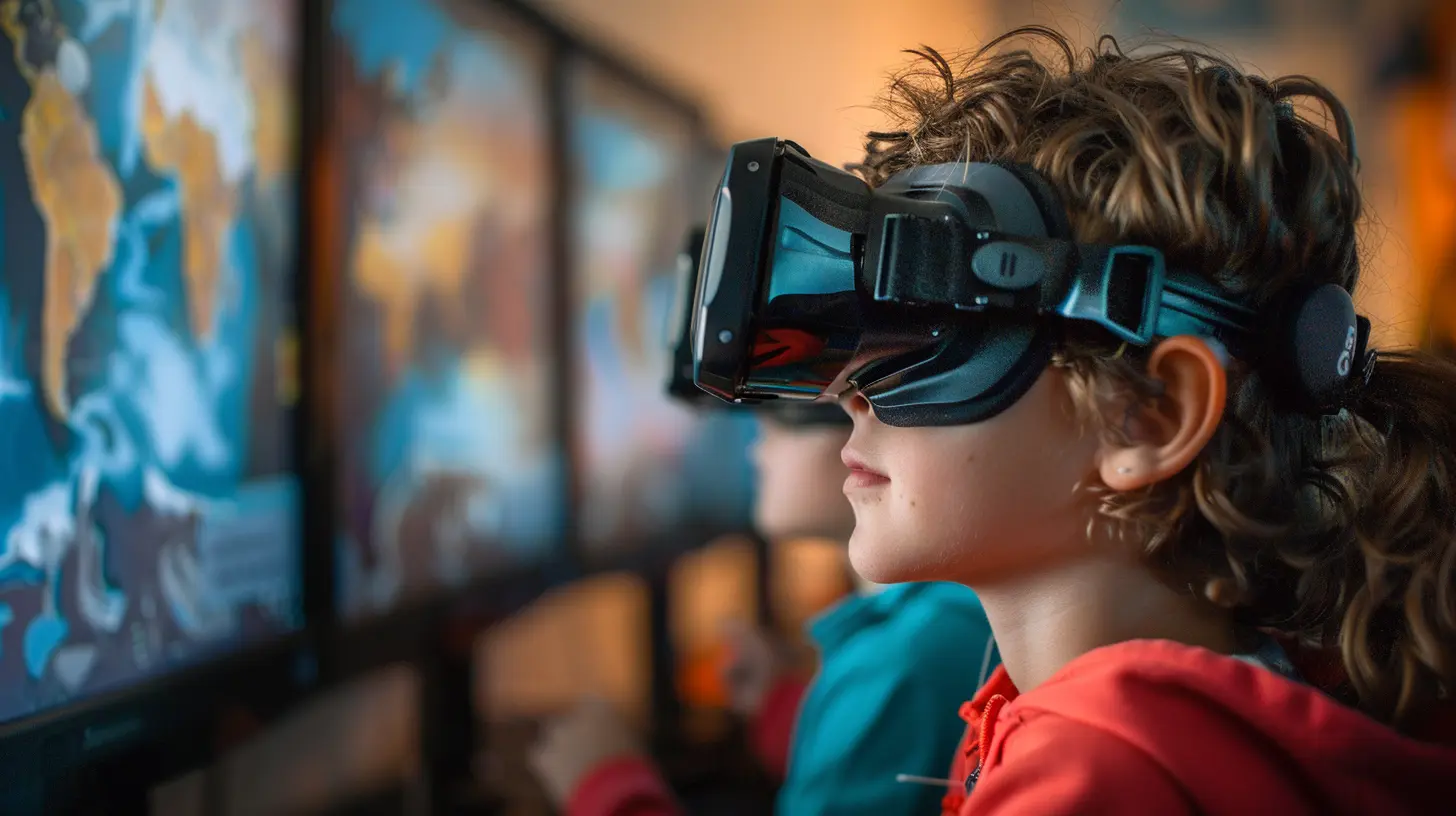How to Create Interactive Lessons for Virtual Classrooms
26 October 2025
Online learning has become the new norm, hasn’t it? Whether it’s a kindergarten class learning the alphabet or a university student diving into complex equations, virtual classrooms are everywhere now. But let’s face it—keeping students engaged from behind a screen is no picnic. Ever tried talking to a bunch of silent tiles on Zoom and felt like you were speaking into the void? Yup, we’ve all been there.
That’s where interactive lessons come into play. They’re like the secret sauce that turns a dull, passive online session into an exciting learning adventure. So, if you’re an educator wondering how to make your virtual classroom feel more like a buzzing coffee shop full of conversation rather than a lonely echo chamber, this guide’s for you.
Let’s roll up our sleeves and dive into how you can create interactive lessons that actually stick.
Why Interactivity is a Game-Changer in Virtual Learning
Before we get into the how, let’s talk about the why. Why is interactivity such a big deal in online education?Well, here’s the thing—attention spans are shrinking, especially with distractions just a click away. A student can open another tab and get lost in YouTube videos faster than you can say "participation points." Interactive lessons combat this by keeping learners actively engaged.
Think of it like a fitness class. Would you rather be lectured about push-ups or actually do them with a coach cheering you on? The same logic applies here. When students participate, they learn better. It's active learning over passive listening.
1. Start with Thoughtful Lesson Planning
Know Your Learners
First things first—know who you're teaching. Are your students visual learners? Do they thrive on discussion or prefer hands-on tasks? Take the time to understand your students' learning styles and interests.For example, if you're teaching high schoolers, pop culture references might help make the lesson more relatable. Teaching adult learners? Use real-life applications or workplace examples.
Set Clear Objectives
You need a road map before taking the trip. Your lesson plan should include:- Learning objectives
- Time allocation
- Tools you'll use (polls, breakout rooms, quizzes, etc.)
- Points for interaction and engagement
It’s not just about filling the time; it’s about making every minute count.
2. Use Engaging Tech Tools (But Don’t Overdo It)
Technology is your best friend in a virtual classroom. But too many tools can overwhelm both you and your students. Pick a few that work well for your audience and stick with them.Here are some fan favorites:
✅ Kahoot & Quizizz
Great for real-time quizzes. Who doesn’t love a little friendly competition?✅ Padlet
Create collaborative boards where everyone can post thoughts, links, pictures, or questions. It’s like a digital corkboard.✅ Nearpod & Pear Deck
Turn your slide decks into interactive sessions instantly. Students can draw, write, or answer polls while you present.✅ Jamboard
Super simple for brainstorming and group work. Think virtual whiteboard meets sticky notes.Use these tools to break up lectures and invite participation. Little nudges like “Alright folks, answer this quick poll” can re-engage drifting students.
3. Embrace a Flipped Classroom Format
Ever heard of flipped learning? It basically means students do the "learning" at home (through videos, readings, etc.) and spend live sessions discussing or applying what they learned.It’s perfect for virtual classrooms because:
- It frees up live time for interactive discussions.
- Students can learn at their own pace.
- Your online sessions can focus on collaboration, not lecturing.
Give your learners something to chew on before class, then use your virtual meeting to talk, debate, and build on it.
4. Create Breakout Room Magic
Breakout rooms can feel awkward at first. Silence, blank stares, someone’s mic not working… you get the gist. But done right, they’re gold.Here’s how to make them work:
- Set clear instructions and objectives before breaking out.
- Assign roles: leader, note-taker, presenter.
- Give time limits.
- Drop into each room to check on progress.
- Have them report back to the main group.
It’s like giving your class little group adventures. They make shy students speak up and help build a team mentality.
5. Get Personal With Your Students
Interactivity isn’t just about tools—it’s about connection. Add a human touch to your lessons.Use Names
Simple but powerful. Saying, “Great point, Sarah!” makes students feel seen.Check In
Start with a “How’s everyone doing?” or a fun icebreaker. It sets the tone and reminds students there’s a real person on the other side.Encourage Cameras On (But Don’t Force It)
Let’s be real—some learners feel uncomfortable being on camera. Gently encourage it, but never shame anyone for staying off. Instead, encourage engagement through chat, reactions, or voice.6. Include Gamification Elements
Gamification is like sneaking veggies into a kid’s mac and cheese—they get the good stuff without even noticing it.Here’s how to gamify your virtual classroom:
- Use a points system for participation.- Offer “badges” or certificates for achievements.
- Run competitions or challenges.
- Incorporate storylines or themes for the week.
Games tap into students’ intrinsic motivation. They don’t even realize they’re learning.
7. Leverage Real-World Scenarios and Role-Playing
Want to make your lessons really stick? Make them real.Let’s say you're teaching business skills. Have students role-play as CEOs making tough decisions. Teaching science? Simulate a virtual lab experiment. Literature? Turn students into characters and debate moral choices.
When students see how classroom content applies to the real world, they become more invested—and that’s the power of purpose-driven learning.
8. Foster Collaboration Not Just Participation
There’s a big difference between participating and collaborating. One’s about being involved; the other’s about working together toward something meaningful.Here’s how to foster collaboration:
- Use shared docs or slides where everyone contributes.
- Assign group projects and presentations.
- Build in peer feedback sessions.
- Encourage open discussion and respectful debates.
You're turning your class into a team. And teams—unlike solo players—build deeper connections with the content and with each other.
9. Keep It Visual and Bite-Sized
Your students stare at screens all day. Long paragraphs? Monotonous slides? That’s a one-way ticket to Doomsville.Break content into bite-sized chunks, use visuals generously, and switch up the format regularly. Think:
- Infographics
- Short videos
- Memes or gifs (yes, seriously!)
- Diagrams and mind maps
Keep things moving and visually appealing. The brain loves variety—it’s like giving it popcorn instead of stale toast.
10. Reflect and Iterate Often
Interactive lessons are never "done." You’ll need to constantly tweak, test, and improve.End each class with a quick exit ticket:
- What did you learn?
- What confused you?
- What did you like or not like?
These insights help you refine your approach. And hey, feedback is a two-way street. You’re learning too!
Bonus: Your Energy Sets the Tone
This might be the most important tip of all—you’ve got to bring the vibe. Your energy is contagious. If you’re flat, your class will be too. Smile, laugh, share anecdotes, be passionate. Show that you love teaching, and your students will love learning.Because at the end of the day, interactive lessons aren’t just about fancy tools or elaborate plans. They’re about connecting with your learners and making education feel alive, even through a screen.
Final Thoughts
Creating interactive lessons for virtual classrooms isn’t rocket science—but it does take intention, creativity, and a willingness to experiment. Remember, you're not trying to replicate a physical classroom—you’re building something entirely new and powerful in its own right.So start small. Try a new tool. Ask a thought-provoking question. Break people into groups. Get feedback. And keep going.
Because the future of learning is here. And you? You're one of its architects.
all images in this post were generated using AI tools
Category:
Virtual ClassroomsAuthor:

Zoe McKay
Discussion
rate this article
1 comments
Cooper Acevedo
This article effectively highlights innovative strategies for enhancing engagement in virtual classrooms. By integrating interactive tools and collaborative activities, educators can foster deeper understanding and maintain student interest in an online learning environment.
November 2, 2025 at 5:31 AM

Zoe McKay
Thank you for your insightful feedback! I'm glad you found the strategies for enhancing engagement valuable. Engaging students in virtual classrooms is essential for effective learning.


